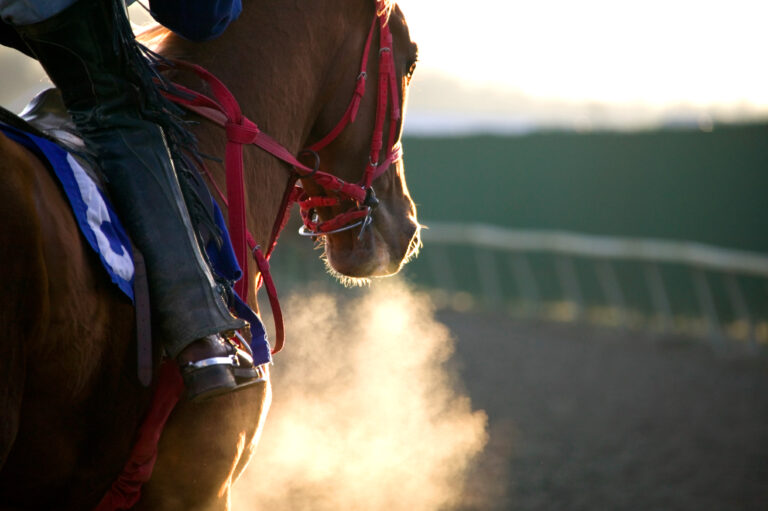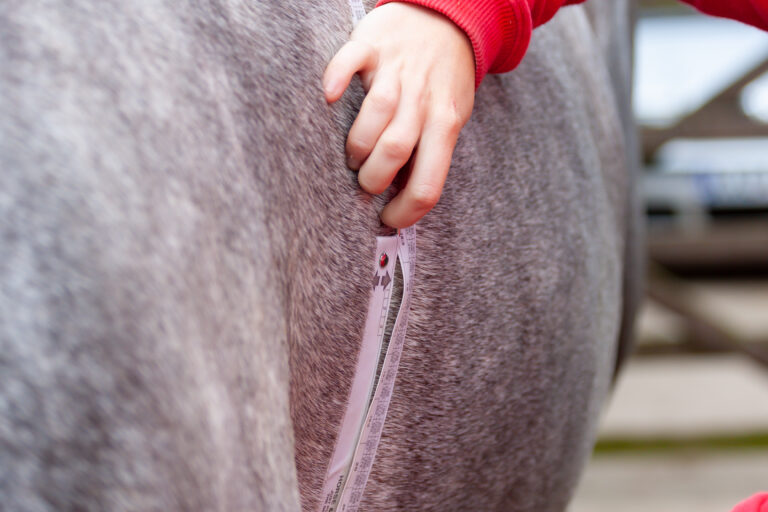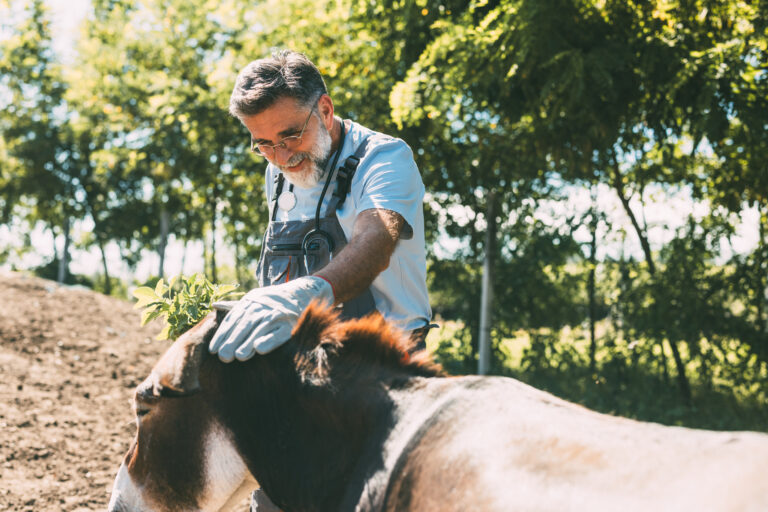
At the National Alliance of Equine Practitioners’ (NAEP) 2024 Saratoga Equine Practitioners Conference, held Sept. 25-28 in Saratoga Springs, New York, Jean-Marie Denoix, DVM, PhD, DECVSMR, gave a presentation on medial metacarpophalangeal overload in sport horses. The founder of ISELP and the ENVA’s Centre d’Imagerie et de Recherche sur les Affections Locomotrices Equines, in France, had an important take-home message for veterinarians: “We can’t just inject a joint when faced with a lameness; we need to understand that the clinical manifestation is related to functional anatomy and biomechanics,” he said. “If you don’t change the biomechanics, you won’t be successful.”
By performing a thorough clinical exam, equine practitioners can better understand where the horse is painful and what needs to be done to keep the horse in work, Denoix said.
A Closer Look at a Left Front Lameness Case
To show the power of biomechanics, Denoix used an example of a 12-year-old Hanoverian mare competing at the CSI**** level with a mild left front lameness when moving in a straight line. Radiographs showed a lesion of the medial aspect of the condyle with lucency and sclerosis of the subchondral and spongious bone of the medial part of the metacarpal condyle.
Looking closer at the biomechanics in slow motion, Denoix pointed out a slight difference in fetlock extension, with the left front having less extension than the right.
“It is important to look at the horse from the side to evaluate metacarpophalangeal extension during the stance phase,” Denoix said.
Observing the horse on a left circle (with the left front on the inside) revealed she was also mildly lame on the right front. When moving in a right circle, the mare had a reduction in load absorption and propulsion in the right front, which is why she was bilaterally lame. Denoix pointed out that on the right circle, she was putting more load on the right forelimb. The left front lameness was clearly worse on the right circle as the mare put weight on the medial aspect of the left front metacarpal condyle.
“To treat this horse to keep her going for five or 10 years, we need to understand the biomechanics,” said Denoix.
What Comes Next?
Denoix said he tries to reduce blocks when examining his patients.
“I just look at the biomechanics,” he said. “On turns, the distal phalanx slides on the load. There is asymmetrical thinning of the joint space and rotation of the first phalanx. There is latero- or mediomotion, depending on which direction the circle is, and collateromotion is always associated with rotation.
“In this case, having a mild varus deformity of the distal limb, there is a medial compression of the metacarpophalangeal joint (with more stretching of the lateral collateral ligament) and more pressure at the lateral aspect of the foot,” he added. “When the horse is turning to the right, medial pressure in the metacarpophalangeal joint is increased and there is more even distribution of load in the foot.”
These cases usually present with a varus of the fetlock, while the normal conformation is a slight valgus, noted Denoix.
For these horses he recommends a kinesitherapic shoe (corrective shoeing).
If the Shoe Fits Asymmetrically …
“We need to address the weakest aspect of the limb,” Denoix explained. “In the case of a varus, there is opposite compression/stretching of the fetlock and the foot. On the straight line there is lateral load over the foot, but the foot is balanced on the circle.”
The goal, he said, was to reduce the load on the medial aspect of the left forelimb via asymmetric shoeing.
“The principle is to use a wider branch of the shoe laterally, increasing the ground reaction force laterally and decreased load medially,” Denoix explained. “This induced worsening of imbalance of the foot but takes the pressure off the medial aspect of the fetlock, which is the painful area. This is a way to relieve biomechanical forces medially.”
On the right forelimb, he recommended a symmetrical/prevention shoe. Using this shoeing technique, the mare can maintain her current level of work, which is the ultimate goal. She is now sound on the straight line as well as the left circle.
“But she needs to work on softer, but not deep, ground,” Denoix noted. “On turns made on soft surfaces, the trajectory of the center of pressure of the foot is much more sagittal than on hard ground … there is less pressure on the painful area.”
Rehabilitation of Fetlock Varus
Rehab involves walking uphill and trotting or walking down. Swimming is great for these cases because it does not stress the distal limb. These horses need to maintain conditioning, which can be achieved via aqua treadmill with a high water level to reduce the weight of the horse on the legs. Alternatively, they can be walked on a treadmill.
Take-Home Message
Veterinarians must learn to recognize medial overload of the fetlock because it requires very specific management. Examine the horse from the side to evaluate fetlock suspension and from the front to evaluate bone axis alignment from the carpus to the foot. Medial overload is often associated with a varus conformation. Controlling the asymmetrical biomechanical stresses is essential for successful case management.
Related Reading
- Equine Rib Fractures as Cause of Poor Performance
- Where We Stand With Podotrochlosis
- 10 Radiographic Prepurchase Abnormalities in Sport Horses
Stay in the know! Sign up for EquiManagement’s FREE weekly newsletters to get the latest equine research, disease alerts, and vet practice updates delivered straight to your inbox.




